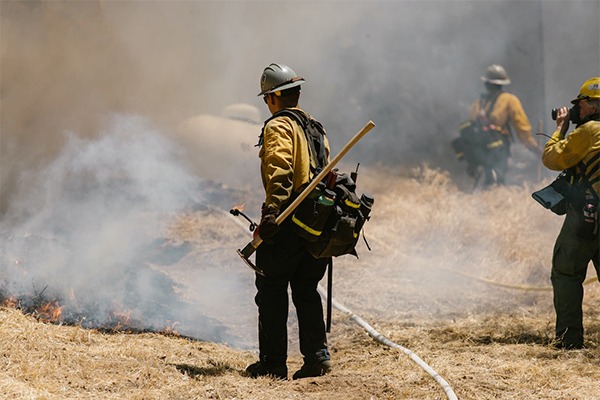Not only do forest fires destroy millions of trees but they also release countless tons of carbon dioxide into the atmosphere, which exacerbates the climate threat. Remember that CO2 is the primary greenhouse gas. This is a sad and worrisome situation that leads us to ask the following questions: How can we reduce the consequences of forest fires? Can a forest recover after a fire?

Fires are relentless. Unfortunately, images of flames consuming our forests can be seen repeatedly all over the country due to the high temperatures. The European Forest Fire Information System (EFFIS) estimates that forest fires have laid waste to more than 2,300 hectares of land in our country since January. This means that in less than seven months more land has been scorched by fire than in all of 2012, the worst year so far since records have been kept.
One of the most visible consequences of forest fires is the destruction of the landscape and its ecosystem. Fires destroy plant resources, damage air and water quality and put wildlife at risk, since the vegetation that is destroyed previously provides oxygen, captured CO2, sustained the soil and served as shelter and food for wildlife.
In 2021 alone, forest fires generated 1,760 megatons of carbon emissions according to data collected by scientists at the Copernicus Atmospheric Monitoring Service (CAMS), which further aggravated the climate situation we are experiencing.
Rising temperatures, dry soil and heat waves, all increasingly common due to climate change, are at the same time three of the factors that exacerbate the risk of fires. It’s a vicious circle.
Table of contents
Stages of a forest fire
What happens during a forest fire? As a rule, forest fires have four stages, which vary depending on their evolution: active, stabilized, controlled and extinguished.
Active: the fire grows freely and spreads.
Stabilized: the fire is not controlled but progresses within the established control lines.
Controlled: the fire has been isolated and stopped from advancing and spreading.
Extinguished: there are no more igniting materials around the perimeter of the fire and the fire is not expected to resume.
How to mitigate the consequences of forest fires
What the above data show us is that the consequences of forest fires are greater than what we usually think and that one thing is clear: fires are not limited to summertime.
The way to minimize the consequences of forest fires is to monitor the factors that can trigger a fire, sound the alarm quickly when one does break out and act immediately to prevent it from spreading,
In addition to other measures such as:
The Ministry of Agriculture, Food and Environment has created a basic list of prohibitions and recommendations that we should follow, such as NOT throwing cigarettes or matches on the ground, NOT using farm machinery that can cause fires or NOT throwing garbage anywhere but in the containers provided, among other things.
If you see a fire, call 112 immediately.

How to recover after a forest fire?
There are species that can resprout by themselves as long as the seed bank has not been damaged. In these cases, no reforestation actions are necessary, but what happens with vegetation that does not have the capacity to recover?
Once the land is cleared of burned wood and other debris, the next steps involve soil restoration and the development of a reforestation plan.
In this stage it is essential to take soil samples and to carefully plan the reforestation: the burned forest’s previous function and what might be going forward, the number of trees to be planted per hectare, the kinds of species that can most easily adapt to the land, etc.
This is the kind of work we are familiar with and have been doing here at Bosquia thanks to the support from companies, brands and individuals like you.
